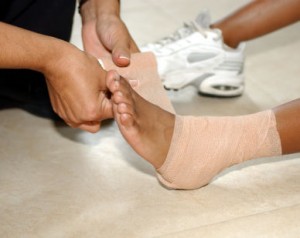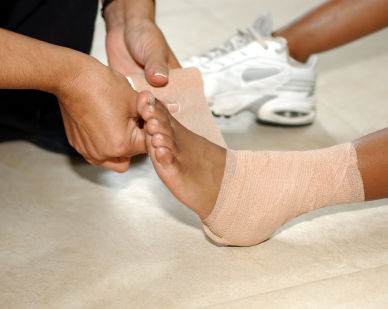
Ligaments are what connect the bones to each other. They are tough and elastic bands that keep the joints in place. When there is a partial or complete tearing of the fibers of the ligaments, it causes an injury to the ligaments, also known as a sprain. The most common sprains occur in the wrist, ankle and knees. Usually, the more severe the sprain is, the greater the swelling and pain is. Sprained ligaments quickly swell and are causes a lot of pain for the victim.
Minor sprains can be treated at home. However, major tearing in the ligaments should be checked by a medical practitioner in order to ensure there are no other damages. To treat a minor sprain, the acronym RICE should be recalled. RICE stands for rest, ice, compress and elevate.
Rest the injured area, although activity should not be stopped altogether. The doctor may advise the person to avoid putting weight on the injured area for two days. To limit deconditioning, exercise the other muscles of the body.
To reduce swelling, ice the injured area. A cold pack, compression sleeve filled with cold water or slush bath may be used. As soon as the injury occurred, the area must be cooled with ice. This should be done four to eight times a day, each ranging 15 to 20 minutes. Continue doing this for the first 48 hours post injury or until swelling progresses. Using ice for an extended period of time may lead to tissue damage.
Using elastic wraps or bandages, compress the injured limb. Whenever it is possible, raise of elevate he injured limb above heart level to limit he swelling. Ask the doctor if the patient may take over-the-counter pain relievers.
Gently start exercising or using the injured limb or area two days after injury was obtained. There should be a steady, progressive improvement in the injury. Nevertheless, if no improvement is observed two to three days after the injury, seek for medical advice. Moreover, if redness or red streaks is observed, the injured area may have been infected, thus immediate medical assistance must be called for.
In most medical situations, first aid training may be used. Particularly, athletes and those who work with them should be knowledgeable of proper treatment in cases emergencies may arise. workplace approved programs offer first aid and CPR courses which are offered to the lay public for emergency situations.

